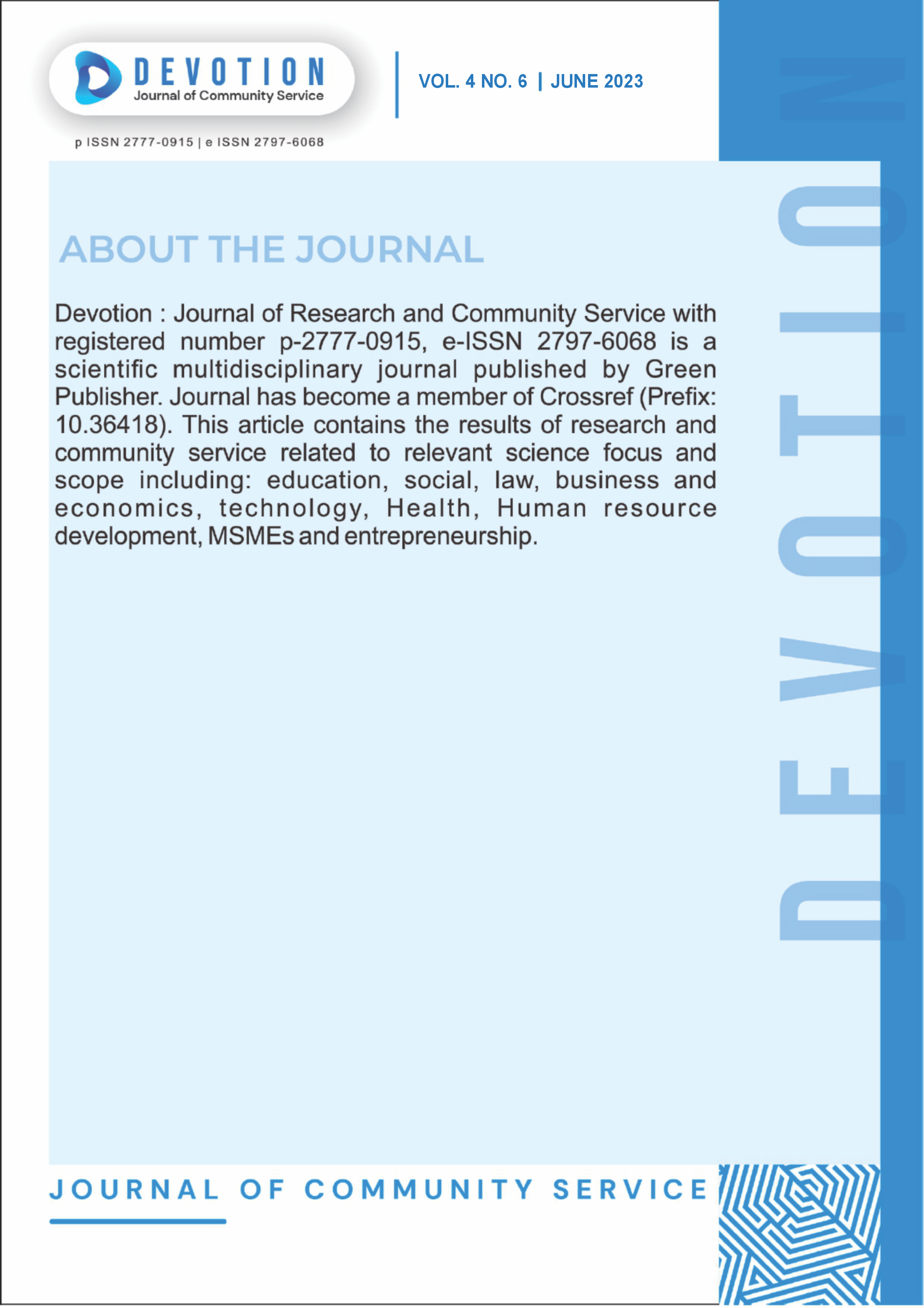Uterine Performance of Rats Exposed to Cigarette Post-Therapy Ethanol Extract of Kebar Grass (Biophytum petersianum Klotzsch)
DOI:
https://doi.org/10.59188/devotion.v4i6.492Keywords:
Biophytum petersianum Klotzsch; Uterus; Kebar GrassAbstract
This study aims to determine the effect of giving ethanol extract of kebar grass (Biophytum petersianum Klotzsch) on the uterine performance of Rattus norvegicus rats exposed to cigarette smoke. The experimental design used was a completely randomized design (CRD). The results obtained were analyzed by Analysis of Variance (ANOVA) then continued with Duncan's test at a significant level of α = 0.05 using SAS software. The sample consisted of 12 rats, which were divided into 4 groups. The rat group (+), 0.067, 0.0135, decreased uterine function by exposure to 10 cigarettes/head/day for 28 days. Mice (-) were the negative control group, namely rats that were not exposed to cigarette smoke and ethanol extract of coriander grass. Mice (+) are the positive control group, namely rats exposed to cigarette smoke 10 cigarettes/head/day for 28 days. Groups 0.067 and 0.135 were exposed to cigarette smoke 10 cigarettes/head/day for 28 days and then given 0.067 mg of coriander grass ethanol extract for the 0.067 group and a dose of 0.135 mg for the rat group 0.135. The results showed that there was an effect of increasing the performance of the rat uterus after administration of ethanol extract of coriander grass. It can be concluded that administration of the ethanol extract of the grass Biophytum petersianum Klotzsch kebar can increase uterine weight and uterine length of rats, with a good dose of 0.135 mg.
Published
Issue
Section
License
Copyright (c) 2023 Adrien Jems Akiles Unitly, Martha Kaihena, Dormatina Kubela

This work is licensed under a Creative Commons Attribution-ShareAlike 4.0 International License.
Authors who publish with this journal agree to the following terms:
- Authors retain copyright and grant the journal right of first publication with the work simultaneously licensed under a Creative Commons Attribution-ShareAlike 4.0 International. that allows others to share the work with an acknowledgement of the work's authorship and initial publication in this journal.
- Authors are able to enter into separate, additional contractual arrangements for the non-exclusive distribution of the journal's published version of the work (e.g., post it to an institutional repository or publish it in a book), with an acknowledgement of its initial publication in this journal.
- Authors are permitted and encouraged to post their work online (e.g., in institutional repositories or on their website) prior to and during the submission process, as it can lead to productive exchanges, as well as earlier and greater citation of published work.













